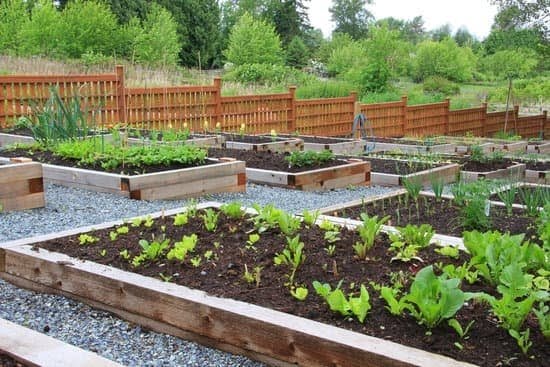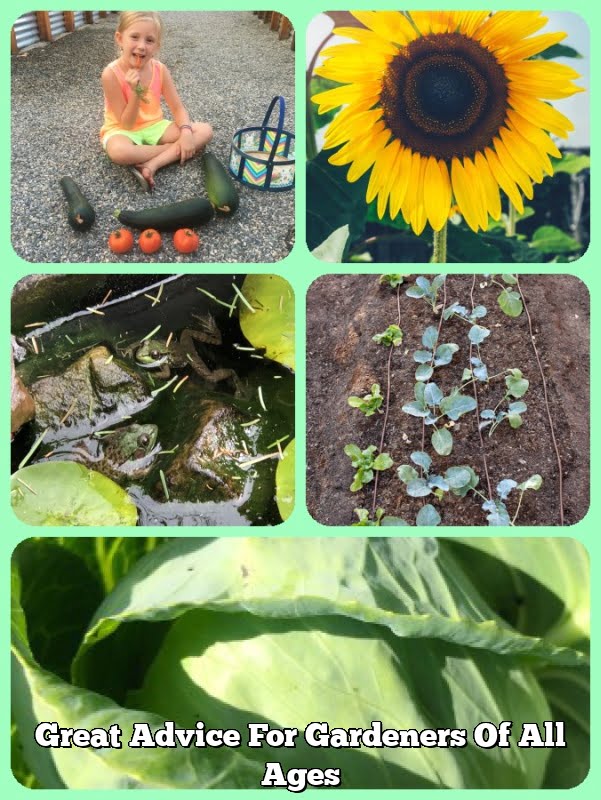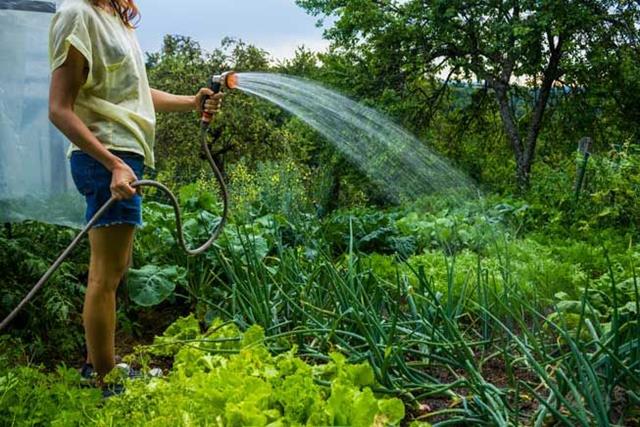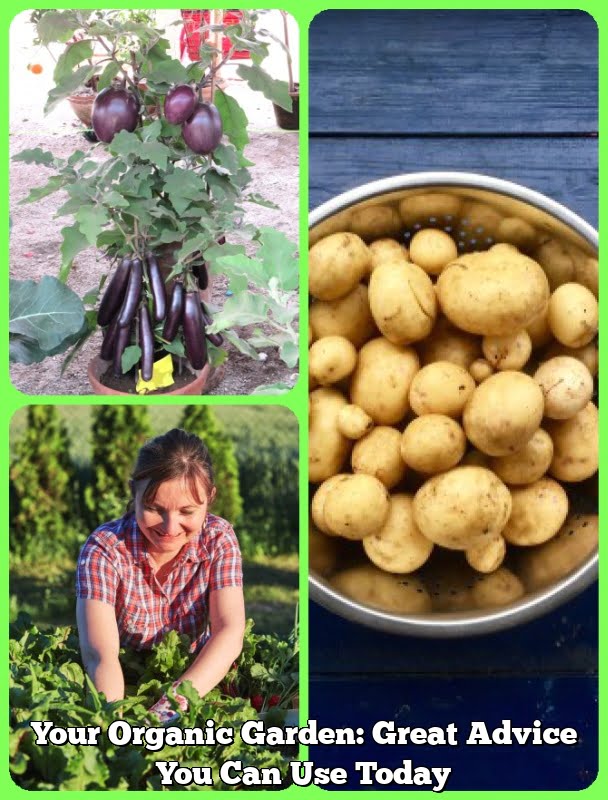When it comes to gardening, the focus is often on functionality and productivity. However, a vegetable garden can also be a stunning sight to behold. In this article, we will explore what makes great looking vegetable gardens and how you can achieve the perfect balance of beauty and functionality in your own backyard oasis.
Creating a great looking vegetable garden goes beyond just planting seeds and hoping for the best. It requires careful planning, design, and maintenance to achieve an eye-catching and bountiful result. From choosing the right location to selecting the best vegetables for aesthetics and functionality, there are many factors that contribute to the visual appeal of a vegetable garden.
In this comprehensive guide, we will delve into the key elements that make a vegetable garden great looking. We’ll discuss how to choose the right location for your garden, design the layout for visual appeal, select aesthetically pleasing vegetables, incorporate companion planting, utilize creative techniques for vertical gardening, maintain your garden for a stunning look, and even add stylish accessories to enhance both form and function.
Whether you’re an experienced gardener or just starting out, this article has something for everyone who wants to create a beautiful and productive vegetable garden.
Choosing the Right Location for Your Vegetable Garden
When it comes to creating great looking vegetable gardens, choosing the right location is crucial for the success of your garden. The first step is to evaluate the available space in your yard and assess which areas receive the most sunlight throughout the day. Most vegetable plants require at least 6-8 hours of direct sunlight, so it’s important to select a sunny spot for your garden.
Finding the Sunniest Spot
Take some time to observe the different areas of your yard at various times of the day to determine where the sun shines the brightest. Keep in mind that as the seasons change, sunlight patterns may shift, so you’ll want to select a location that consistently receives ample sunshine.
Considering Drainage and Soil Quality
In addition to sunlight, it’s essential to consider drainage and soil quality when choosing a location for your vegetable garden. Look for an area with well-draining soil to prevent waterlogging, as excessive moisture can lead to root rot and other issues. If needed, you can improve soil quality by adding organic matter such as compost or aged manure.
Once you’ve identified a suitable location for your vegetable garden, take note of any potential obstacles such as overhanging trees or structures that may cast shade or obstruct sunlight. By carefully selecting the right location for your vegetable garden, you’ll be setting yourself up for success in creating a stunning and productive space for growing vegetables.
Designing Your Vegetable Garden Layout for Visual Appeal
When it comes to creating great looking vegetable gardens, the layout is a key factor in achieving visual appeal. The layout of your garden should not only be functional but also aesthetically pleasing. One important aspect to consider when designing your vegetable garden layout is the shape and size of your garden bed. Rectangular or square shaped beds are common, but you can also opt for more unique shapes such as a circular or keyhole garden bed design.
In addition to the shape of your garden bed, the overall arrangement of the plants plays a crucial role in the visual appeal of your vegetable garden. Consider planting in a way that creates symmetry and balance, with taller plants at the back and shorter ones at the front. This arrangement not only looks visually appealing but also ensures that all plants receive adequate sunlight.
Another way to enhance the visual appeal of your vegetable garden is by incorporating pathways or borders within your layout. These can add structure and definition to your garden space, creating a more organized and polished look. Whether using traditional materials such as gravel or bricks, or opting for a more creative approach such as using herbs or flowers as borders, adding these elements can elevate the overall aesthetic of your garden.
It’s important to keep in mind that a well-designed layout not only contributes to the visual appeal of your vegetable garden but also makes it easier to maintain and harvest. By carefully planning and implementing an attractive and functional layout, you can create a visually stunning vegetable garden that is both pleasing to the eyes and productive in terms of yield.
| Vegetable Garden Layout | Visual Appeal Rating |
|---|---|
| Rectangular shape with balanced plant arrangement | 5/5 |
| Circular shaped bed with defined pathways | 4/5 |
| Unique keyhole design with creative borders | 4/5 |
Selecting the Best Vegetables for Aesthetics and Functionality
When it comes to creating great looking vegetable gardens, it’s crucial to select the right vegetables that not only look beautiful but also serve a practical purpose. By choosing a variety of vegetables that are both aesthetically pleasing and offer functionality, you can create a stunning and productive garden that will be the envy of your neighborhood.
Here are some key considerations when selecting the best vegetables for aesthetics and functionality:
- Colorful Vegetables: Choose vegetables in a variety of vibrant colors to add visual interest to your garden. Consider planting bright red tomatoes, purple eggplants, yellow squash, and colorful bell peppers.
- Foliage Variety: Incorporate different types of leafy greens and herbs with contrasting textures and shapes to add depth and dimension to your garden bed.
- Edible Flowers: Include edible flowers such as nasturtiums, calendula, and pansies not only for their beauty but also for their ability to attract pollinators and beneficial insects to your garden.
In addition to their visual appeal, it’s important to choose vegetables that offer functionality by providing a bountiful harvest for your kitchen. Consider including a mix of fast-growing crops like lettuce and radishes for instant gratification, as well as long-season crops like tomatoes and peppers for continuous harvest throughout the season.
By carefully selecting a diverse range of vegetables that are both visually striking and functional, you can create a great looking vegetable garden that is as pleasing to the eye as it is productive. With the right combination of colors, textures, and edible delights, your garden will be a beautiful oasis that provides an abundance of fresh produce for your table.
Incorporating Companion Planting for a Beautiful and Productive Garden
When it comes to creating great looking vegetable gardens, incorporating companion planting is a key element to achieving both beauty and productivity in your garden. Companion planting involves strategically placing different plants next to each other to benefit one another in terms of growth, pest control, pollination, and more. By implementing this method in your garden, you can create a visually stunning space while also maximizing the potential yield of your crops.
One popular example of companion planting is the Three Sisters technique, which originated from Native American gardening traditions. This method involves planting corn, beans, and squash together in the same area.
The corn provides a structure for the beans to climb, the beans add nitrogen to the soil that benefits all three crops, and the squash acts as ground cover that helps retain moisture and suppresses weeds. Not only does this combination result in a harmonious and visually appealing garden bed, but it also offers functional benefits that contribute to the overall success of the garden.
In addition to the Three Sisters technique, there are numerous other companion planting combinations that work well for great looking vegetable gardens. For instance, interplanting aromatic herbs like basil or dill among your vegetables can help deter pests and attract beneficial insects that contribute to a healthy ecosystem.
By carefully selecting plants that complement each other in terms of growth habits, nutrient needs, and pest resistance, you can create a diverse and beautiful garden while promoting optimal growing conditions for your vegetables.
Using Creative Techniques for Vertical Gardening and Space Optimization
Vertical gardening is a great way to maximize space and create a stunning visual impact in your vegetable garden. By utilizing creative techniques for vertical gardening, you can grow more vegetables in a smaller area while adding an attractive and interesting element to your garden design.
One popular method for vertical gardening is to use trellises or arbors to support climbing vegetables such as peas, beans, cucumbers, and tomatoes. These structures not only provide support for the plants but also add height and structure to the garden, creating a visually appealing look. Consider using attractive, decorative trellises or arbors to add a touch of elegance to your vegetable garden.
Another creative technique for vertical gardening is the use of hanging planters or baskets. This allows you to grow trailing or vining vegetables such as strawberries, cherry tomatoes, and peppers without taking up valuable ground space. Hanging planters can be hung from fences, pergolas, or other structures in the garden, adding visual interest and color at different heights.
Additionally, consider incorporating tiered plant stands or shelves into your vegetable garden design. These can be used to display potted herbs, small vegetables, or flowers, adding dimension and visual appeal to your garden while making the most of limited space. Tiered plant stands are not only functional but also add a stylish touch to your great looking vegetable garden.
- Utilize trellises or arbors for climbing vegetables
- Experiment with hanging planters or baskets for trailing vegetables
- Incorporate tiered plant stands or shelves for potted plants
With these creative techniques for vertical gardening and space optimization, you can create a visually stunning vegetable garden that maximizes productivity without sacrificing aesthetics. Whether you have limited space or simply want to add an interesting design element to your garden, these methods will help you achieve a great looking vegetable garden that you can enjoy throughout the growing season.
Maintaining Your Garden
Once you have created a great looking vegetable garden, it is important to maintain its visual appeal and productivity. Weeding is crucial to keeping your garden looking tidy and preventing unwanted plants from taking over. Regular weeding also ensures that your vegetables are not competing with other plants for nutrients and water.
Consider using organic mulch such as straw or bark to help suppress weed growth and retain soil moisture. Mulch can also add a nice finishing touch to the aesthetic appeal of your garden.
Pest control is another essential aspect of maintaining a stunning vegetable garden. Keep an eye out for common garden pests such as aphids, caterpillars, and beetles, and take proactive measures to prevent infestations. There are many natural methods of pest control that can be used in conjunction with traditional pesticides to keep your vegetable garden looking beautiful while also protecting the health of your plants.
In addition to weeding and pest control, proper watering, fertilizing, and pruning will contribute to the overall appearance of your vegetable garden. By staying on top of maintenance tasks, you can ensure that your great looking vegetable garden remains visually appealing while also providing a bountiful harvest of fresh vegetables.
| Maintenance Task | Importance |
|---|---|
| Weeding | Prevents competition for nutrients |
| Mulching | Suppresses weed growth and retains soil moisture |
| Pest Control | Protects plant health and appearance |
Stylish and Functional Accessories for Great Looking Vegetable Gardens
When it comes to creating a great looking vegetable garden, the right accessories can help take your garden to the next level. Stylish and functional accessories not only add visual appeal but also provide practical benefits for maintaining and enjoying your garden. Here are some accessories to consider for your great looking vegetable garden:
Decorative Garden Fencing and Edging
Adding decorative fencing and edging to your vegetable garden can instantly elevate the visual appeal of your space. Not only do they create a polished look, but they also serve practical purposes such as keeping out pests and delineating different areas of your garden.
Artistic Garden Markers
Garden markers not only help you keep track of what you’ve planted, but they can also be an opportunity to add a touch of creativity to your garden. Consider using artistic or decorative markers that not only serve their purpose but also enhance the overall aesthetic of your vegetable garden.
Functional Garden Tools and Storage
Investing in high-quality, ergonomic gardening tools not only makes gardening more enjoyable but also contributes to the overall look of your garden. Additionally, having a stylish and functional storage solution for your tools can help keep your garden organized and clutter-free.
Ultimately, choosing accessories that combine both style and functionality is key to creating a great looking vegetable garden. By incorporating these elements into your garden space, you can enjoy both the visual beauty and practical benefits of a well-designed and maintained vegetable garden.
Conclusion
In conclusion, creating great looking vegetable gardens is not only about the aesthetics but also about functionality and productivity. By choosing the right location, designing a visually appealing layout, selecting the best vegetables, incorporating companion planting, utilizing creative techniques like vertical gardening, and maintaining your garden with care, you can enjoy a stunning and bountiful harvest.
A well-maintained and stylish vegetable garden not only provides you with fresh produce but also adds beauty and charm to your outdoor space. It becomes a source of pride and joy as you enjoy the fruits (and vegetables) of your labor in your own backyard. The satisfaction of growing your own food in a visually appealing setting is truly unmatched.
So whether you are a seasoned gardener or just starting out, investing time and effort into creating great looking vegetable gardens will surely pay off in both visual appeal and an abundant yield. With the right knowledge, techniques, and dedication, anyone can transform their outdoor space into a beautiful and productive oasis. Happy gardening.
Frequently Asked Questions
How Can I Make My Vegetable Garden Look Pretty?
Making your vegetable garden look pretty can be achieved by incorporating a variety of colorful and visually appealing plants. Mixing in flowers, herbs, and decorative plants can add interest and beauty to the overall garden. Creating defined borders and using mulch or gravel pathways can also enhance the aesthetic appeal of the garden.
What Is the Most Efficient Vegetable Garden Design?
The most efficient vegetable garden design typically involves raised beds or containers, as these methods help control soil quality, drainage, and weeds. Utilizing the square foot gardening technique or interplanting compatible vegetables can maximize space and yield. Additionally, incorporating vertical gardening with trellises or cages can further optimize space and productivity.
How Can I Make My Garden Look Amazing?
To make your garden look amazing, consider incorporating a mix of plants with varying colors, textures, and heights for visual interest. Adding focal points like a water feature, sculpture, or colorful container gardens can create eye-catching elements. Proper maintenance such as regular watering, weeding, and pruning will keep the garden looking its best.

If you’re looking to get into vegetable gardening, or are just looking for some tips on how to make your current garden better, then you’ve come to the right place! My name is Ethel and I have been gardening for years. In this blog, I’m going to share with you some of my best tips on how to create a successful vegetable garden.





